Redefining the Workplace: The New Office Interior Design
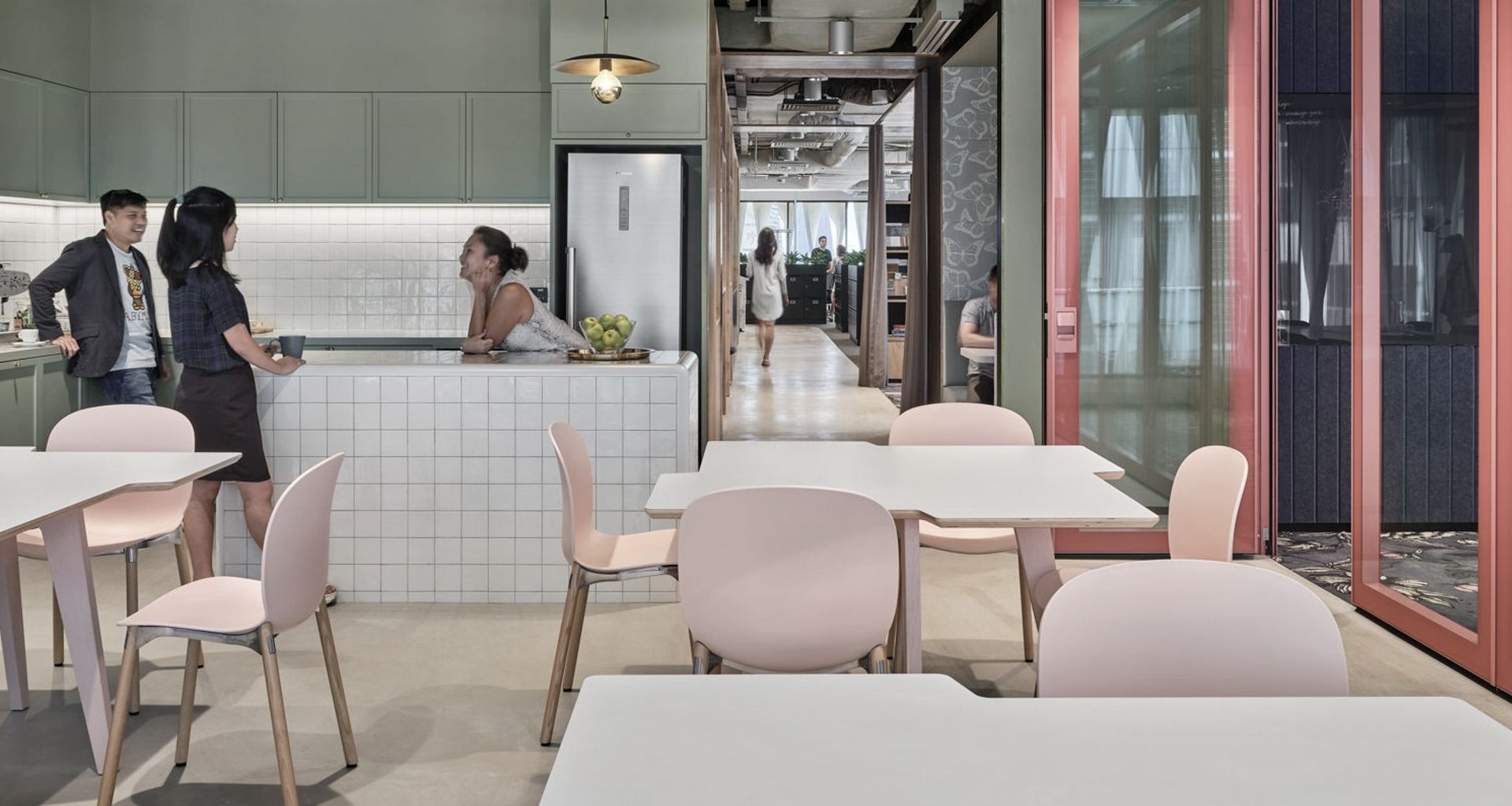
How are organizations using their office interior design to entice employees to return to the workplace after working remotely for the past two years? During the height of the pandemic, 42 percent of U.S. employees—roughly two-thirds of U.S. economic activity—were working from home, according to Stanford University Institute for Economic Policy Research. Although this grand shift in workforce behavior came abruptly and seemingly with few growing pains—a Stanford study found working from home increased productivity by 13 percent over a nine-month span—the return to the office might prove a more traumatic transition. As such, companies strive to enhance their office interior designs to draw employees back to the workplace. But how can designers mimic the home aesthetic within the confines of the office interior design? And what unique design features are required in today’s office interior designs to lure workers from their cozy abodes back into the workplace?
The Big Shift

Gensler co-CEO Diane Hoskins has been observing effective workplace designs for decades, and now she’s working with clients to figure out what types of office interior designs will best suit their organizations post-pandemic. “From a design standpoint, there’s a conversation about the role of workplaces at the individual-worker level,” Hoskins said in a conversation with a McKinsey Real Estate Practice leader earlier this year. “That is a very powerful shift. It opens the door to new solutions that may be unexpected.”
“Prior to the pandemic, we saw the rise of activity-based-working with importance placed on offering a diverse range of settings to meet people’s needs,” notes Christina Magrans, managing director and cofounder of the New York office of Siren Design, an international firm with offices throughout Australia and in Singapore, New York, and London. “The office is being designed to support our new hybrid way of working. This approach is very individualized.”
A People-First Approach
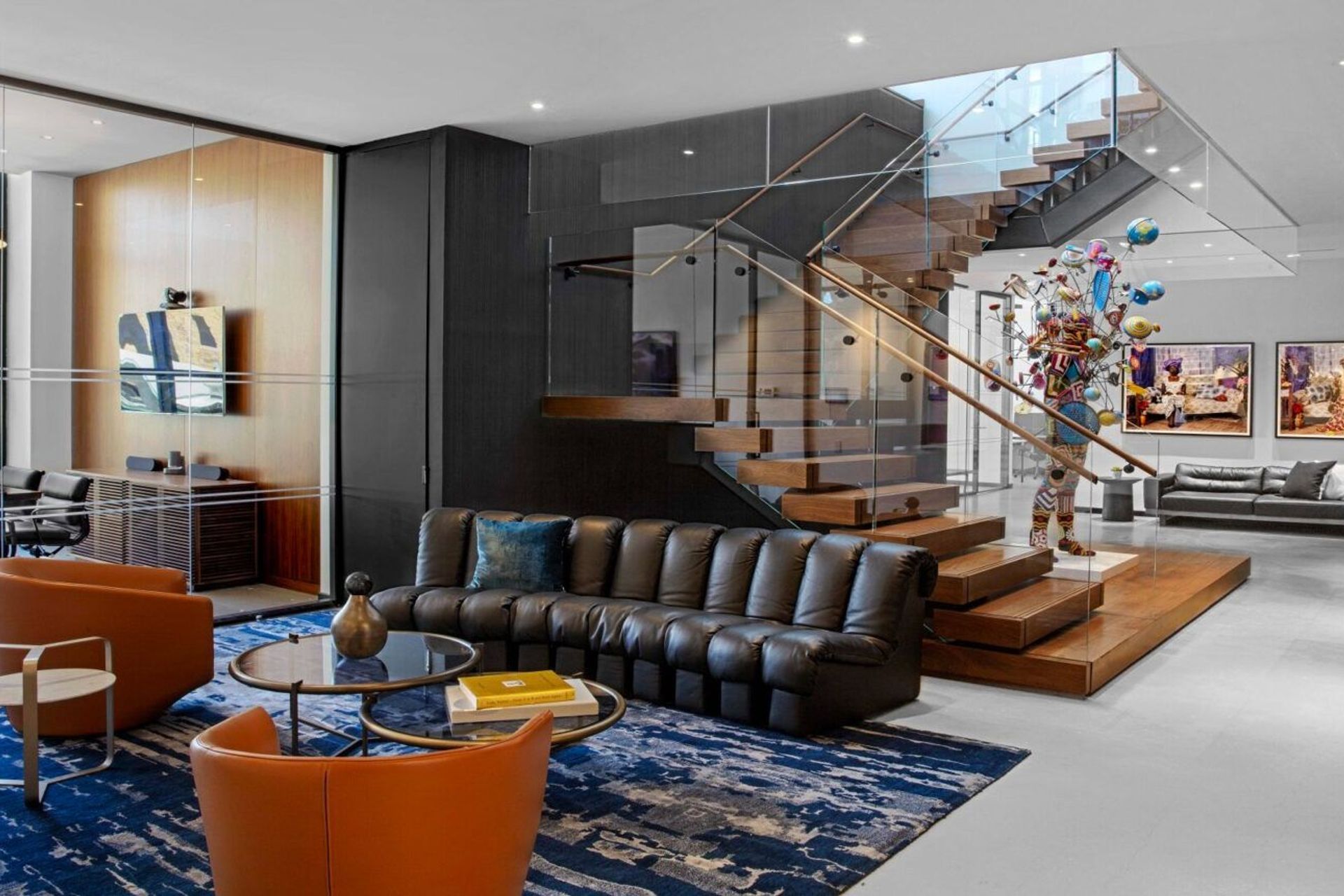
Creating office interior designs that adequately reflect each client, respond to how employees work, and offer comforting environs has always been critical. The ‘resimercial’ trend in furniture and office interior designs gained momentum prior to COVID, and now it’s taken on new meaning. For example, a few years pre-pandemic Studio Designer client and architect Elizabeth Roberts relocated her design studio out of her home in a Brooklyn townhouse into a nearby former factory space. The new office interior design offered decidedly Brooklyn-cool features, such as an elevator shaft that she converted to a wooden mezzanine for her own private office, with a web of netting slung in the shaft area above to create a spot for colleagues to lounge beneath a skylight. Now, the convivial, homey vibe Roberts has forged with her office interior design helps to draw her 20-person staff back to the workplace post-COVID.
“Companies that want people to be present and to optimize outcomes can embrace a more people-centered approach,” Hoskins explains. “The more the workplace is connected in a thoughtful way to the organizational strategies, leadership models, operational frameworks, and potential outcomes of a company, the stronger the workplace will emerge. The challenge is to invent a new approach and to design for a new reality, which at the beginning of the pandemic was more about a safe work environment and how you lay people out in six-foot separations but has now evolved to rethinking the entire landscape of workplaces and how people do work.”
In the new headquarters for Jay-Z’s Roc Nation in Chelsea in New York, designed post-COVID by architect Jeffrey Beers, the need to reflect the creative culture of the entertainment company and the personalities of each executive in their private offices is balanced with inviting public spaces and bright, airy work areas that accommodate requirements of a post-COVID office interior design. Common spaces feature items from Jay-Z’s personal collection of paraphernalia, and touchdown areas feel like living rooms with furnishings that are residential in aesthetic. The building’s wide-open layout, high ceilings, outdoor spots (rooftop and balconies), and individual listening rooms and booths provide ample opportunities to spread out, allow for social distancing, and accommodate working styles post-COVID.
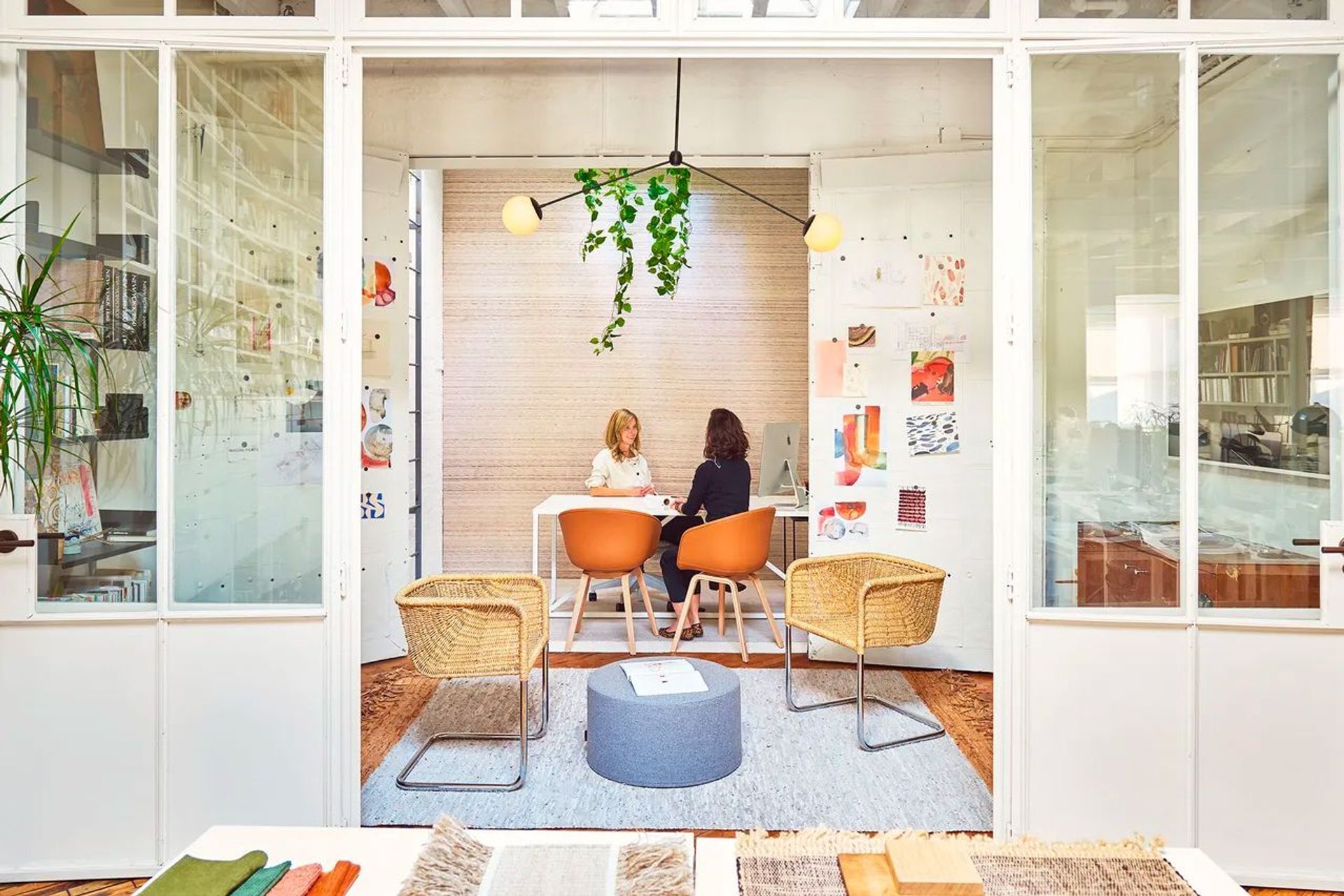
The New Workplace Model
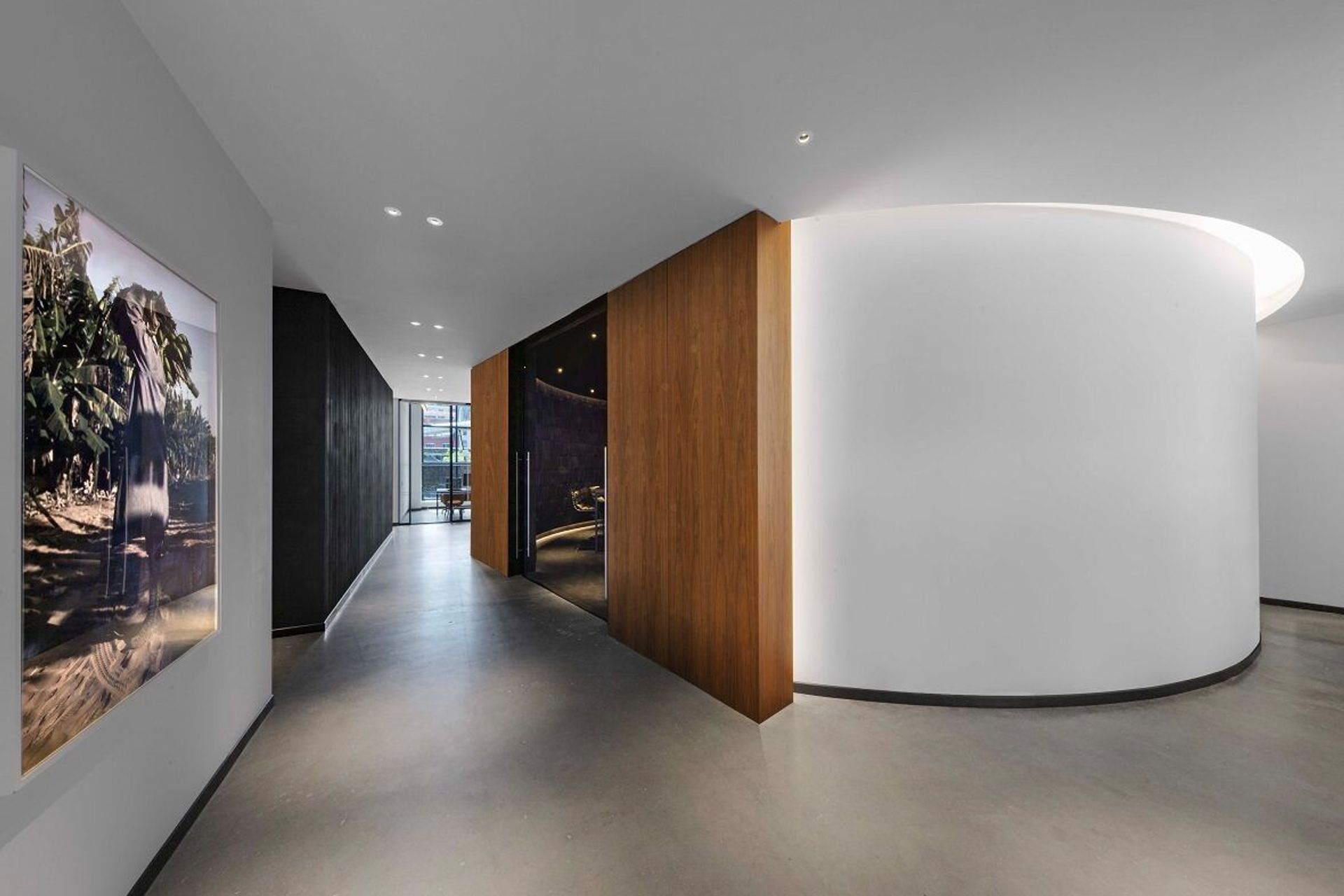
Siren’s Magrans along with Penny Sloane, managing director and cofounder of the firm’s Singapore office, and Nicole Fitzgerald, managing director of Siren’s Sydney office, outline critical trends that define this new office interior design post-COVID. They say:
- One- to two-person focus or videoconferencing rooms are in high demand.
- Fewer large meeting rooms are needed, as many attendees now dial in.
- Collaboration spaces are digitally inclusive—allowing all participants to be involved regardless of their location.
- Arrival check-in kiosks replace large reception spaces.
- There is a larger emphasis on hospitality and refreshment offerings.
“[Now] companies have to work harder to attract and retain staff—and to get them to come into the office,” Magrans observes. “As a result, design is far more user-led.”
Hoskins elaborates on this concept: “Human-centered design is design with the intent of enabling people. It is not about putting the design before the human, but rather the design is for the human. … There’s an opportunity to rebuild the system to be better than what was done before COVID-19.”
The formality of the workplace has broken down post-COVID, and as such the office interior design has evolved. “The aesthetic of the office has become more soft, casual, and biophilic with nods to residential furniture and fixtures,” Fitzgerald explains. “The design of corporate interiors is now focused on providing a better working environment such as ergonomic furniture and lighting, latest technology, face-to-face collaboration facilities, hospitality and refreshments. All of these offerings are not always possible at home.”
Future Focused

Design strategies that were prompted by COVID are likely to continue. “Interiors with higher or removed ceilings are in greater demand due to added circulation of air space,” explains Fitzgerald. “They also add to the psychological feeling of more space, and this can help in thinking more openly. Smaller rooms lend themselves to more specific tasks and thinking.”
Magrans adds, “Spaces for private and focused work are just as important as the large social / collaboration zones. Striking the balance between the two is critical.”
In Asian office interior designs, Sloane explains, “We are still being asked for screens and distancing markers in high-traffic environments. We are including sanitation stations that are purposefully designed into the fit-out rather than as an add-on. Most suppliers of finishes now add an antimicrobial coating to their products.”
Magrans also notes a greater emphasis on learning and experience hubs. “The importance of innovation driving performance and connections is crucial to staying ahead. … These environments can’t be replicated at home,” she says, adding, “We are also seeing more purposeful design—there is no wasted space.”
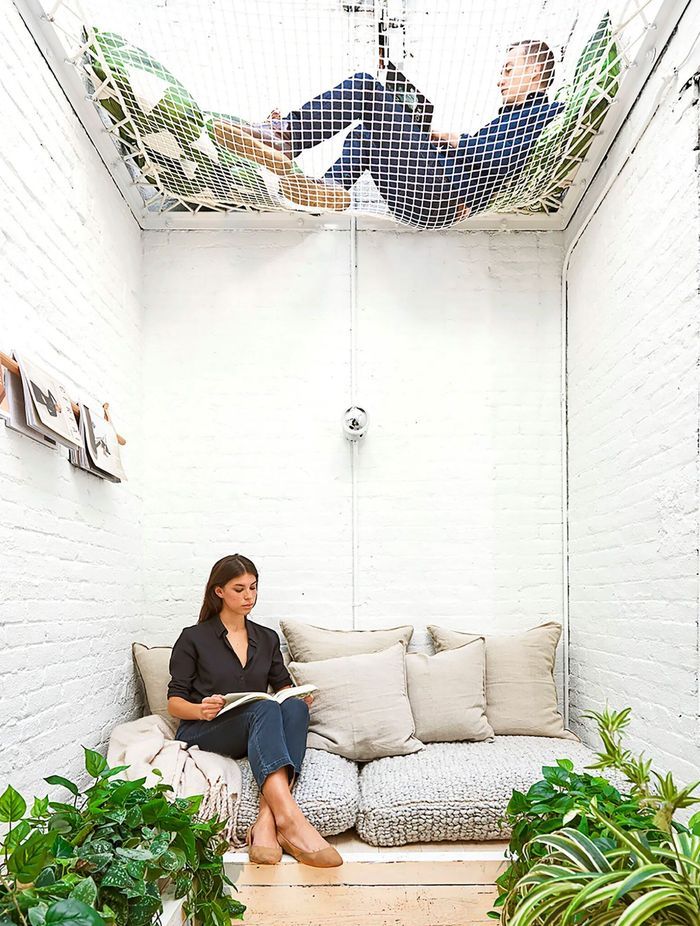
FEATURED IMAGE: Siren Design Group’s own Singapore office exudes a homey vibe in the cafe area | Photography by Owen Raggett
This article originally appeared on StudioDesigner.com
